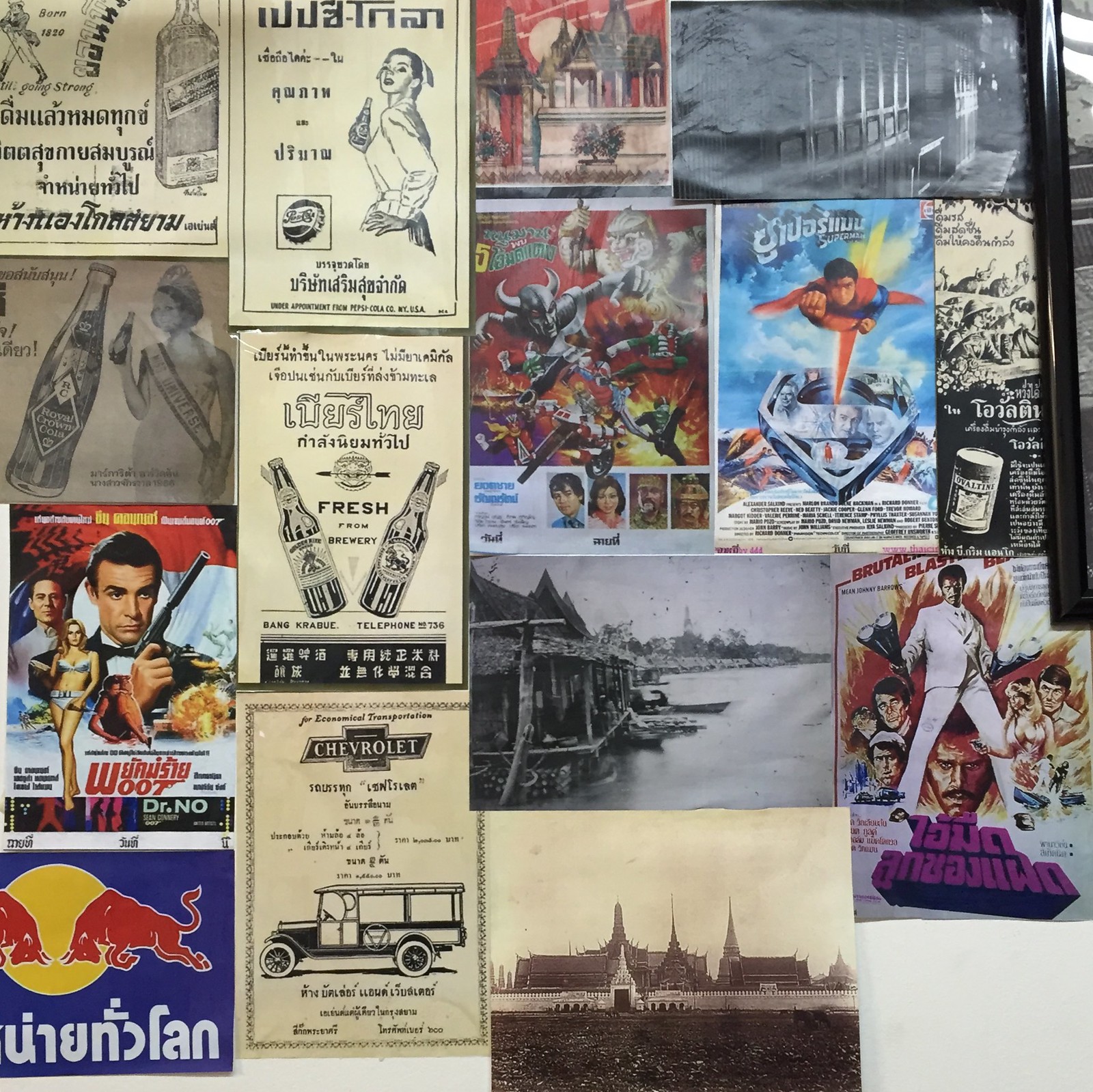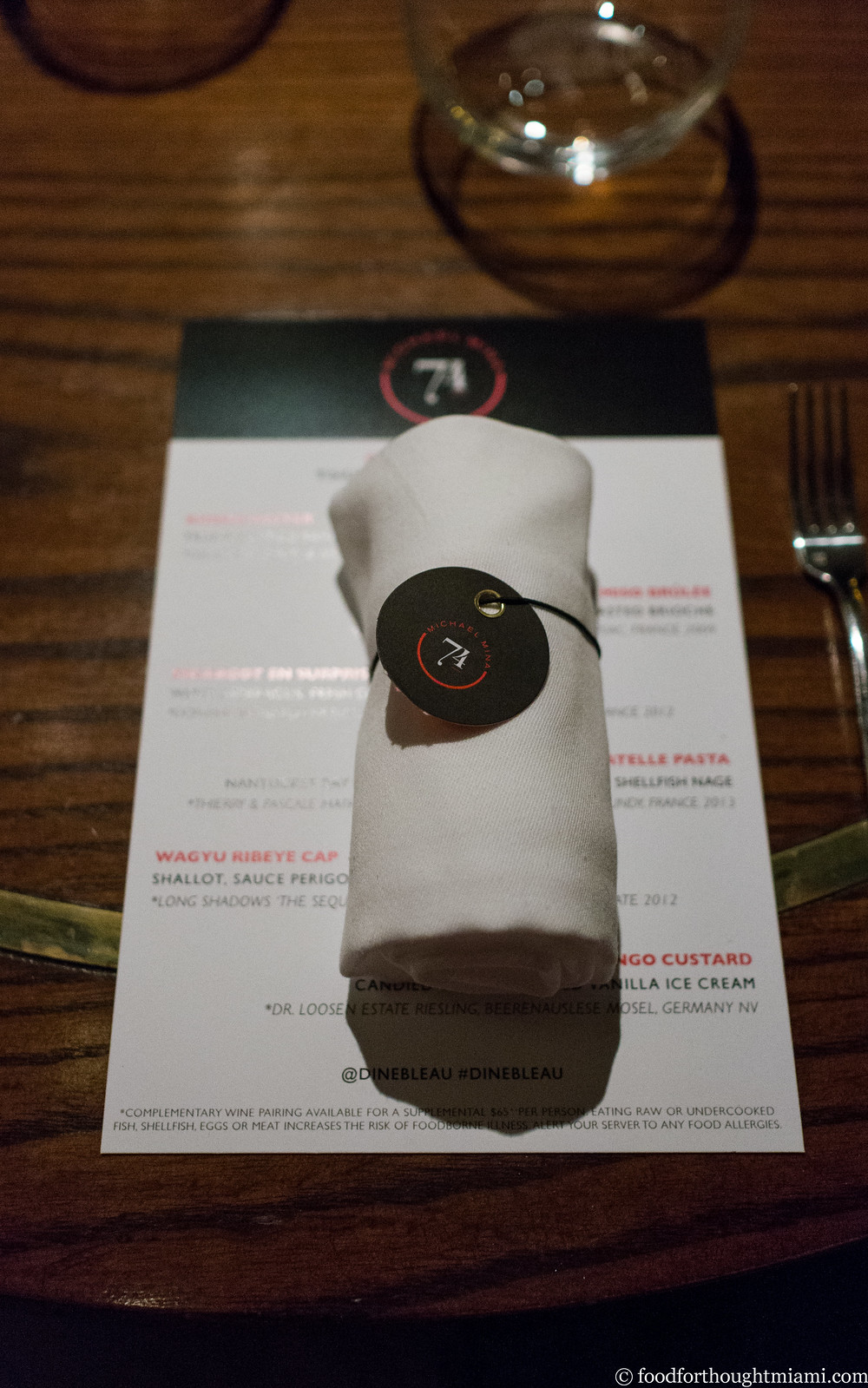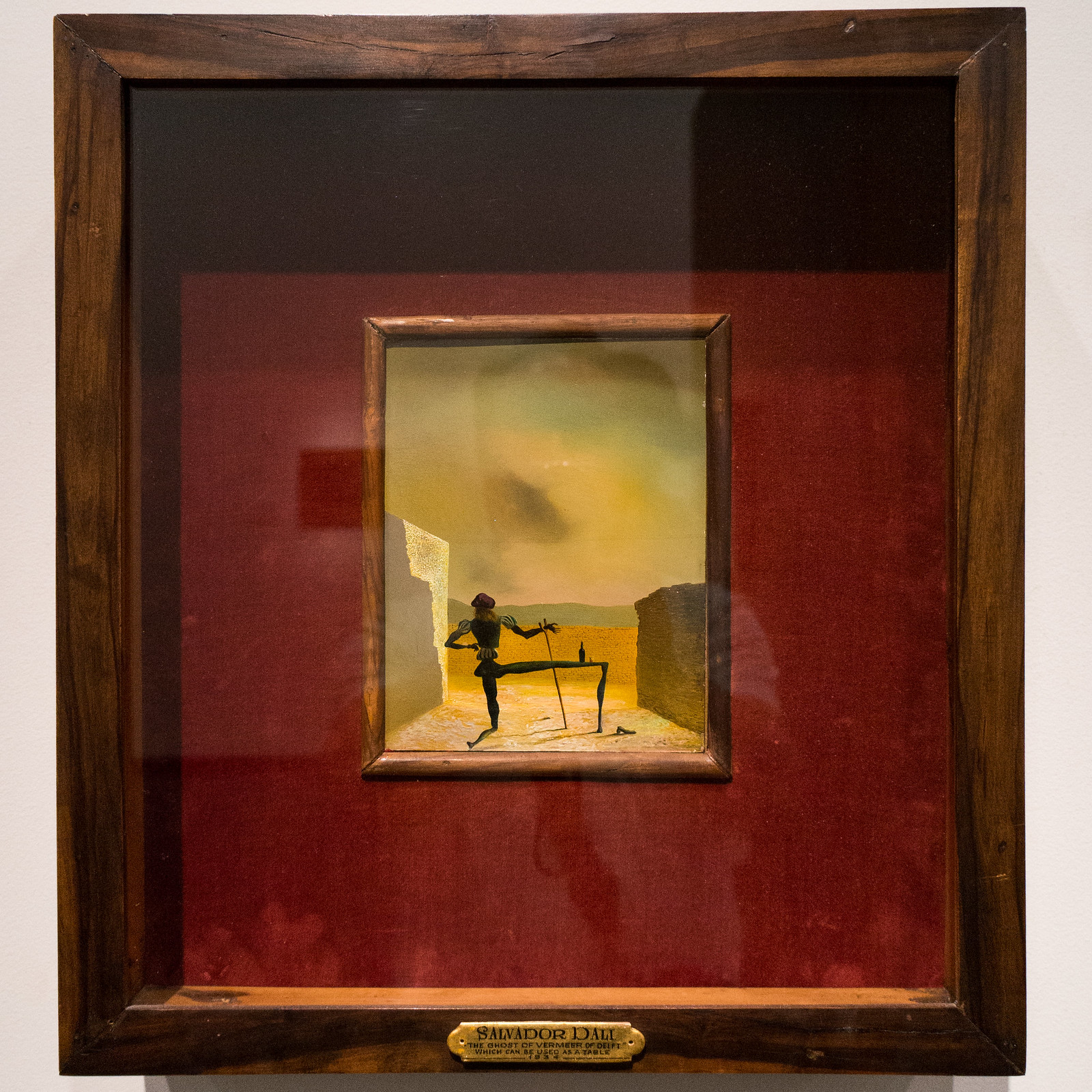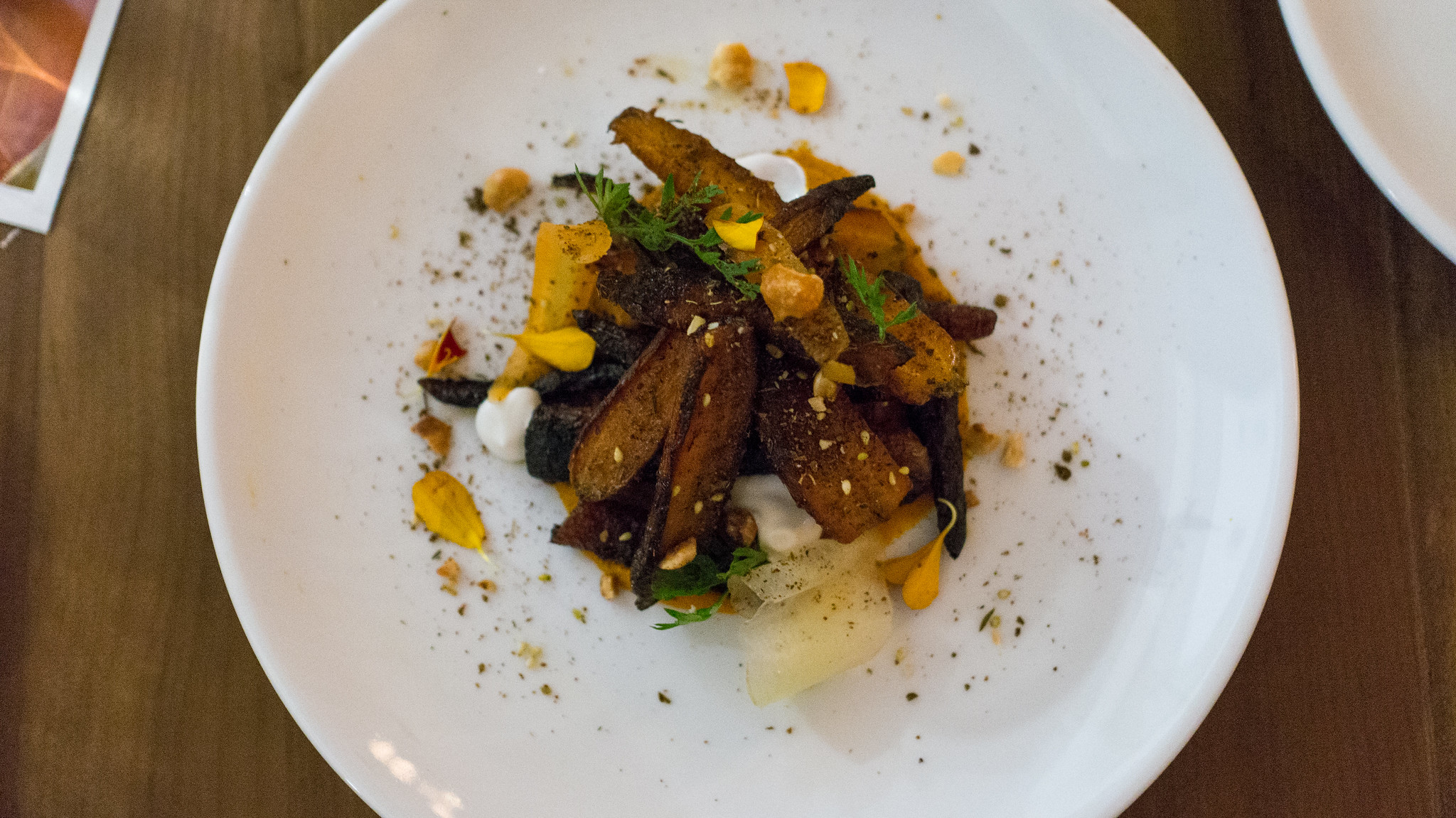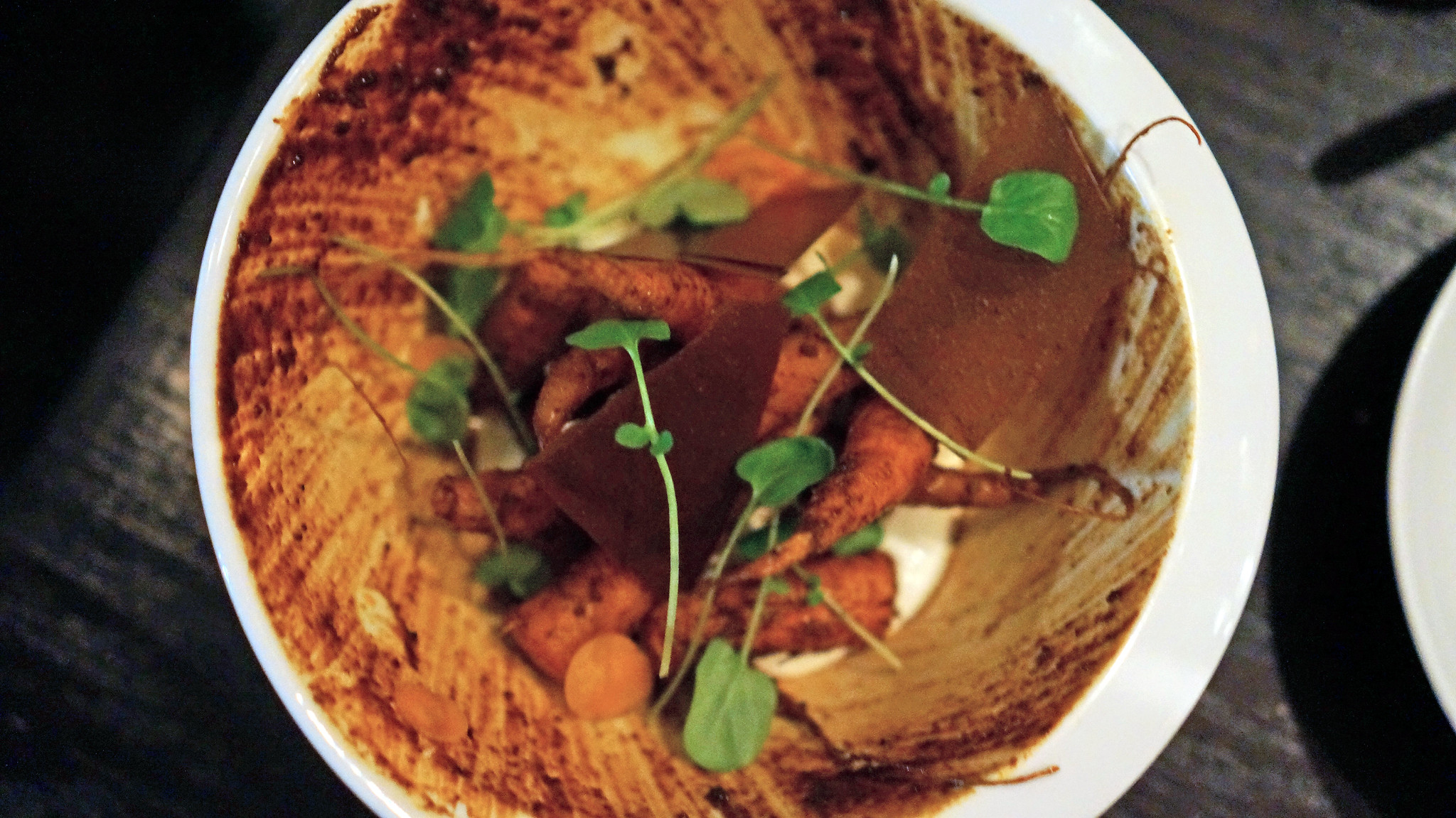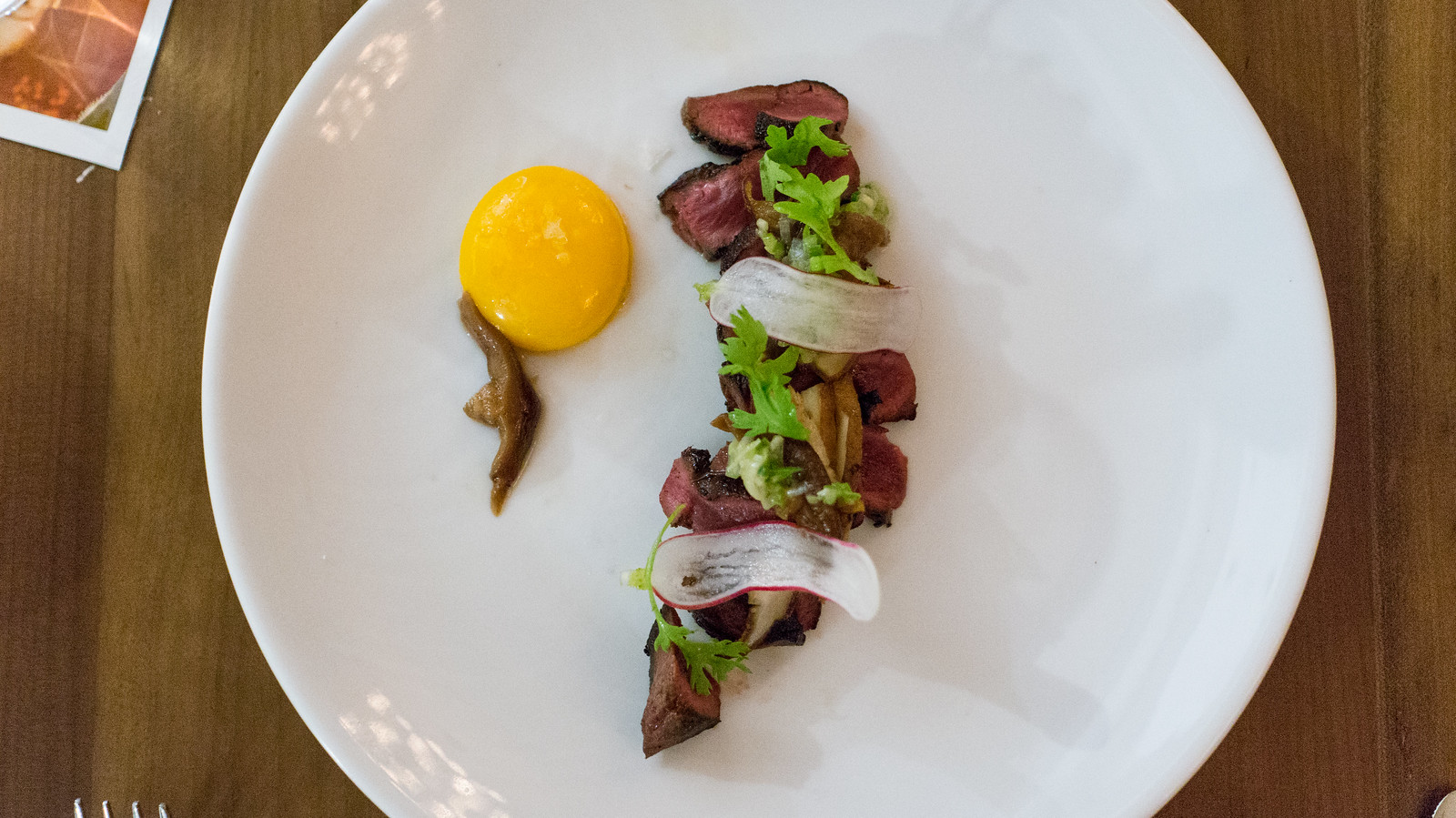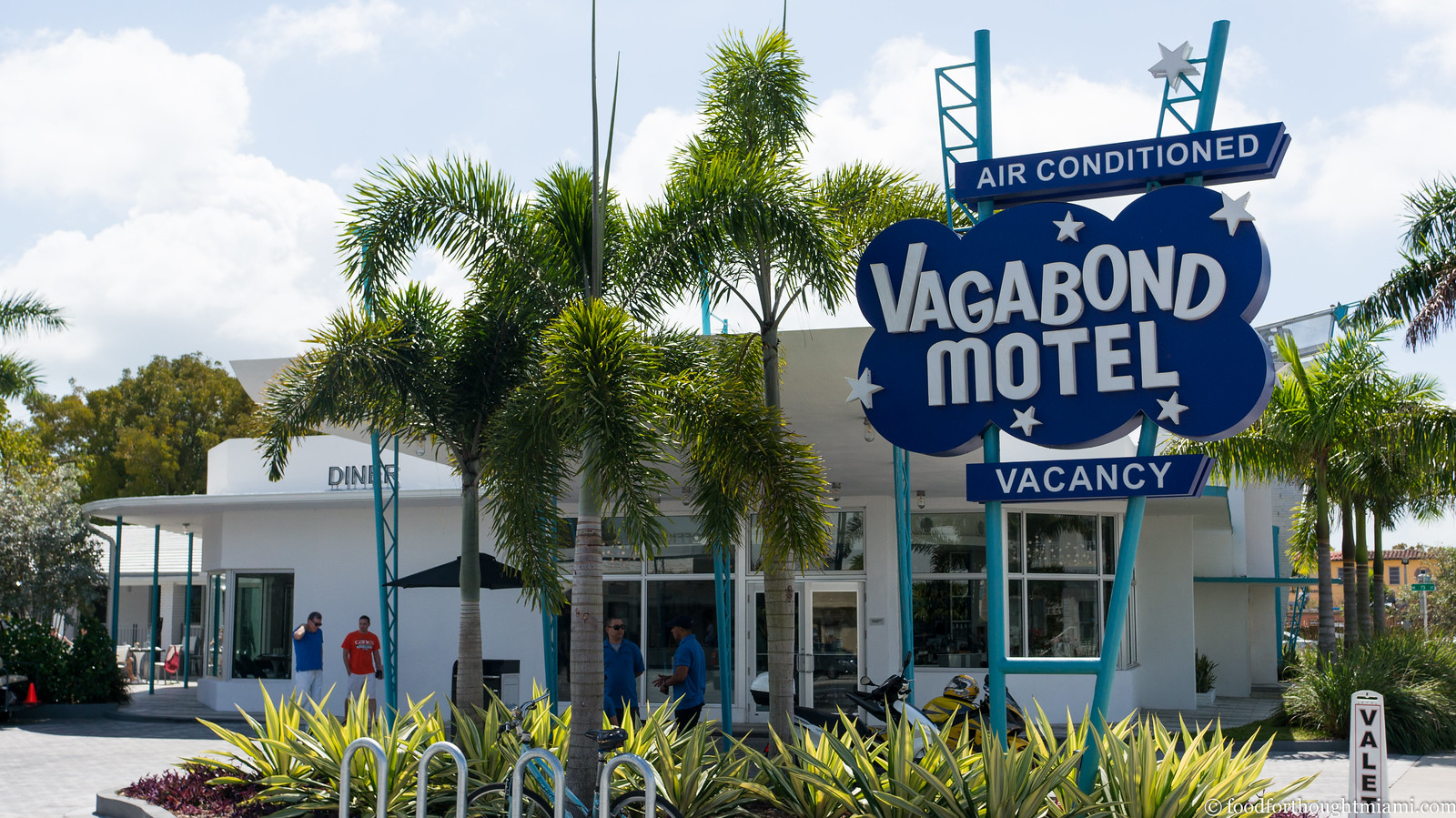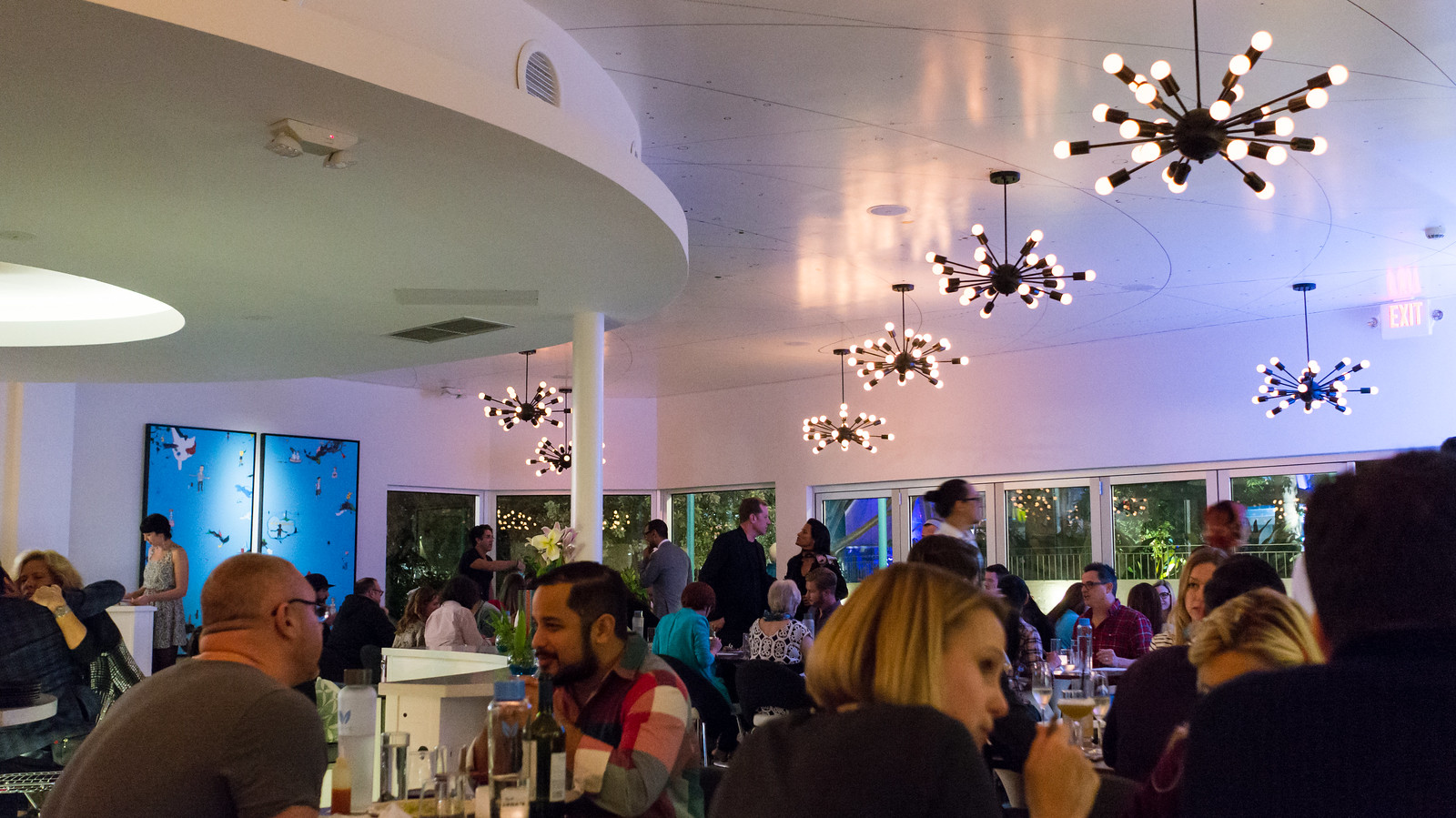I've often bemoaned the cookie-cutter nature of most Thai restaurants in Miami. It's as if they all got the same regulation-issue menu from the "Bureau of Miami Thai Restaurants:" there's the "A" version which invariably has a nearly identical listing of satays, spring rolls, "volcano chicken," and choices of proteins with choices of different-hued curries; and there's the "B" version, which also includes sushi and other Japanese items.[1] The same dull consistency infects the preparation of those menu items: lackluster, tepidly spiced, and invariably too sweet.
There are a couple exceptions: I am a big fan of Panya Thai in North Miami Beach, and Ricky Thai Bistro nearby in North Miami, both of which I've been meaning to write about for a long time. Now I can add another to the list: Cake Thai Kitchen on Biscayne Boulevard, just north of 79th Street.[2]
Back in December, after driving by the somewhat mysterious new sign (is it a bakery or a Thai restaurant? A Thai bakery?),[3] I found Cake's menu listed on an online delivery service website, and got pretty excited. Crispy rice with house-made fermented pork "salami," grilled pork neck, chili paste squid with salted egg ... clearly, the Bureau never sent them the regulation-issue menu.
(You can see all my pictures in this Cake Thai Kitchen flickr set).
And, most dishes were every bit as good as they sounded. When Thai food is made right, there's a balancing of extremes: salty, sour, spicy, sweet, bitter, funky and herbaceous all turned up really loud, ultimately combining to great effect - sort of like vintage Stooges. Cake's food had that going on.
(continued ...)
Sunday, April 26, 2015
Tuesday, March 31, 2015
Cobaya Griese at MM74
Thomas Griese is the chef at MM74, a Michael Mina restaurant in the Fontainebleau resort in Miami Beach. It's a "dressy casual" kind of venue, someplace you might go to before heading to Liv (or maybe even after clubbing: it's open until 2am on weekends) and get anything from hamachi "poppers" to a $26 burger to Mina's classic lobster pot pie. Don't get me wrong, the food at MM74 is good – very good, in many instances – but you wouldn't expect a high end, classically French inspired dining experience there.
But that's what Chef Griese did for his Cobaya dinner, drawing inspiration from his stage at The French Laundry and other fine dining venues[1] to put together a meal that was as luxurious and fancy as any we've had.
(You can see all my pictures in this Cobaya Griese at MM74 flickr set).
The theme was set from the start as we settled into several tables cloistered in the back of the subterranean restaurant downstairs in the Fontainebleau (our first actual "underground" dinner). A kusshi oyster blanketed in a silky truffled yuzu sabayon, with a dollop of osetra caviar perched on top, was a subtle nod to Keller's classic "Oysters and Pearls."[2] That striking lurid blue is from infusing curaçao into the salt on which the oyster is plated.
From oysters, caviar and truffles to foie gras, of course: in the form of a crème brûlée, blended with mellow white miso. Brioche toast soldiers with slivers of banana and some fresh herbs and flowers were plated alongside for dunking into the creamy custard after you pierced through its burnished sugar cap, with dots of a sweet ruby port reduction circling the dish. The combination of liver, miso and banana might sound unlikely but made perfect sense: a matching of similarities instead of contrasts, with their rich, creamy, unctuous qualities merging into something positioned right between savory and sweet.
(continued ...)
Wednesday, March 25, 2015
Who Wore It Best?
In a post earlier this year, I mentioned a recent experience I had at St. Petersburg's Dalì Museum: seeing some of the artist's early works, what was most striking about them was how derivative they were. Several of Dalì's paintings from the late 1920's looked like lesser works of whichever contemporary he was currently in the thrall of, including many that bore remarkable similarities to Picasso's and Miro's works. It was not until the following decade that one of the most distinctive artists of the twentieth century actually found his own style – when Dalì started making paintings that looked like Dalìs.
The delicate subject of inspiration versus copying in the cooking world is one I've explored often here. Few, if any, artists start their careers with a fully formed vision of their style together with the technical ability to execute it. There's plenty of exploration, experimentation, and, yes, copying, that usually comes first. And I suspect it's much the same in the kitchen.
The complicating fact is that in the restaurant world, chefs generally aren't doing it in the privacy of cloistered artists' studios: they work in a public setting, serving up their creations on a plate to paying customers. Does it matter if those "creations" are sometimes very similar to dishes actually created by other chefs? If the primary focus of a restaurant meal is flavor, then perhaps not: a great-tasting dish tastes great, regardless of who thought it up first. And indeed, many outstanding dishes are the product of one chef taking another chef's idea and making it even better.
Some chefs unabashedly fess up to copying others. The Mission Street Food (the pop-up precursor to Mission Chinese Food) book talks about how they did "homage" dinners centered around their "phantom culinary heroes" including Rene Redzepi. Not having actually been to Noma, they had to "piece together our recipes by poring over images online and culling bits of information here and there, not unlike teenagers learning about sex from porn." In Fancy Desserts, Del Posto's punk rock pastry chef Brooks Headley talks about how it can even happen subconsciously. He draws a cooking:music analogy between Noma and the Dead Kennedys as having unique and "un-rip-offable" styles, then notes how that didn't stop everyone – including himself – from trying to copy Noma: "For a long time, seeing sorrel and sea buckthorn berries on fine dining menus really pissed me off. (You can't rip off the Dead Kennedys, man!) But then I realized that I was doing it, too. I was so guilty, and I didn't even realize it." The incriminating evidence: pickled green strawberries.
So there shouldn't be any shame in it. But if you are copying (or paying homage, depending on how negative or positive a spin you wish to apply), how much, if any, credit ought you give? Should you do like David Kinch does when he serves an "Arpege egg" at Manresa? Can you be coy, like Pubbelly when it lists "dates AVEC chorizo" on the menu? Or is it sufficient to just assume that knowledgeable diners will be in on the joke (and oblivious diners won't care)? And with creativity an increasingly common component of the marketing pitch for new restaurants, what of Ferran Adríà's maxim, "creativity means not copying"?
I don't know all the answers. But I do know when something looks and/or tastes a lot like something I've had before. So, inspired by Us Weekly (and with a hat tip to JSDonn), here's my version of "Who Wore It Best?" Let me know what you think.
1. Roasted baby carrots, mole, hazelnut, yogurt, za'atar at Vagabond Restaurant, Miami.
2. Roasted carrots with mole poblano, yogurt and watercress at Empellon Cocina, New York.
My latest mantra is that "carrots and yogurt" is the new "beets and goat cheese" – a combination that seems to appear on every new menu in some form, and which despite its increasing ubiquity I'll still order because it's usually pretty darn good. But the similarities between a dish at chef Alex Chang's new Miami restaurant, Vagabond, and Alex Stupak's Empellon Cocina in NY go further: not just the carrots and the yogurt, but also the distinctive use of Mexican mole sauce, plus the tepee presentation, though some other components differ. (Note: Empellon has been serving this dish since at least 2012).
(continued ...)
The delicate subject of inspiration versus copying in the cooking world is one I've explored often here. Few, if any, artists start their careers with a fully formed vision of their style together with the technical ability to execute it. There's plenty of exploration, experimentation, and, yes, copying, that usually comes first. And I suspect it's much the same in the kitchen.
The complicating fact is that in the restaurant world, chefs generally aren't doing it in the privacy of cloistered artists' studios: they work in a public setting, serving up their creations on a plate to paying customers. Does it matter if those "creations" are sometimes very similar to dishes actually created by other chefs? If the primary focus of a restaurant meal is flavor, then perhaps not: a great-tasting dish tastes great, regardless of who thought it up first. And indeed, many outstanding dishes are the product of one chef taking another chef's idea and making it even better.
Some chefs unabashedly fess up to copying others. The Mission Street Food (the pop-up precursor to Mission Chinese Food) book talks about how they did "homage" dinners centered around their "phantom culinary heroes" including Rene Redzepi. Not having actually been to Noma, they had to "piece together our recipes by poring over images online and culling bits of information here and there, not unlike teenagers learning about sex from porn." In Fancy Desserts, Del Posto's punk rock pastry chef Brooks Headley talks about how it can even happen subconsciously. He draws a cooking:music analogy between Noma and the Dead Kennedys as having unique and "un-rip-offable" styles, then notes how that didn't stop everyone – including himself – from trying to copy Noma: "For a long time, seeing sorrel and sea buckthorn berries on fine dining menus really pissed me off. (You can't rip off the Dead Kennedys, man!) But then I realized that I was doing it, too. I was so guilty, and I didn't even realize it." The incriminating evidence: pickled green strawberries.
So there shouldn't be any shame in it. But if you are copying (or paying homage, depending on how negative or positive a spin you wish to apply), how much, if any, credit ought you give? Should you do like David Kinch does when he serves an "Arpege egg" at Manresa? Can you be coy, like Pubbelly when it lists "dates AVEC chorizo" on the menu? Or is it sufficient to just assume that knowledgeable diners will be in on the joke (and oblivious diners won't care)? And with creativity an increasingly common component of the marketing pitch for new restaurants, what of Ferran Adríà's maxim, "creativity means not copying"?
I don't know all the answers. But I do know when something looks and/or tastes a lot like something I've had before. So, inspired by Us Weekly (and with a hat tip to JSDonn), here's my version of "Who Wore It Best?" Let me know what you think.
Who Wore It Best? (Round 1)
1. Roasted baby carrots, mole, hazelnut, yogurt, za'atar at Vagabond Restaurant, Miami.
2. Roasted carrots with mole poblano, yogurt and watercress at Empellon Cocina, New York.
My latest mantra is that "carrots and yogurt" is the new "beets and goat cheese" – a combination that seems to appear on every new menu in some form, and which despite its increasing ubiquity I'll still order because it's usually pretty darn good. But the similarities between a dish at chef Alex Chang's new Miami restaurant, Vagabond, and Alex Stupak's Empellon Cocina in NY go further: not just the carrots and the yogurt, but also the distinctive use of Mexican mole sauce, plus the tepee presentation, though some other components differ. (Note: Empellon has been serving this dish since at least 2012).
(continued ...)
Monday, March 23, 2015
Vagabond Restaurant - Miami MiMo District
When chefs from other cities open restaurants in Miami, there's often a sort of "I'm going to show you how it's done" swagger that locals can find off-putting. You hear lots of broad brush "Miami doesn't have ____" and "Miami doesn't do _____" statements from people who sometimes have spent less than a week here. That limited experience doesn't keep them from professing to educate us all about ourselves and what we're missing.
I was worried we were getting more of the same when I read a pre-opening interview with Alex Chang, the young chef[1] selected to run the Vagabond Restaurant & Bar inside the newly renovated and restored Vagabond Hotel on Biscayne Boulevard.[2] Here's the brash newcomer telling us, "So ... it's different compared to other big cities... I think the food here is not quite as progressive and innovative. I think there's some great chefs here and a lot of people doing some really great stuff, but I think what I found is that there's something missing in the middle to me." And "I just don't think there are restaurants that are super unique here .. like, oh this restaurant bleeds Miami."
At least it was balanced by some humility too: "I'm just trying to really, really figure out what Miami is made of and what it can be..." So I was willing to cut the guy some slack. And if I'm going to be completely honest, though I may not completely agree with the categorical statements, there's an element of truth to what he says.[3] But more important, I wanted to try the guy's food. Let's see what you've got.
(You can see all my pictures in this Vagabond Restaurant flickr set).
There's a "DINER" sign outside the Vagabond Restaurant, keeping with the 1950's era style that's been so faithfully restored throughout the property, and the atmosphere inside is delightfully Jetsons-inspired, staying just this side of kitschy. But Chang's food is decidedly contemporary. Consistent with the "Vagabond" name, inspiration is pulled from all over the map: you'll taste flavors from Mexico, Japan, Italy, Cuba, Thailand, Jamaica, Spain and more – including South Florida. It was interesting to hear from my CSA farmer, Muriel Olivares of Little River Cooperative, that Vagabond has become one of their best customers, and is always interested in the more unusual items they're able to provide. That was a good sign.
(continued ...)
I was worried we were getting more of the same when I read a pre-opening interview with Alex Chang, the young chef[1] selected to run the Vagabond Restaurant & Bar inside the newly renovated and restored Vagabond Hotel on Biscayne Boulevard.[2] Here's the brash newcomer telling us, "So ... it's different compared to other big cities... I think the food here is not quite as progressive and innovative. I think there's some great chefs here and a lot of people doing some really great stuff, but I think what I found is that there's something missing in the middle to me." And "I just don't think there are restaurants that are super unique here .. like, oh this restaurant bleeds Miami."
At least it was balanced by some humility too: "I'm just trying to really, really figure out what Miami is made of and what it can be..." So I was willing to cut the guy some slack. And if I'm going to be completely honest, though I may not completely agree with the categorical statements, there's an element of truth to what he says.[3] But more important, I wanted to try the guy's food. Let's see what you've got.
(You can see all my pictures in this Vagabond Restaurant flickr set).
There's a "DINER" sign outside the Vagabond Restaurant, keeping with the 1950's era style that's been so faithfully restored throughout the property, and the atmosphere inside is delightfully Jetsons-inspired, staying just this side of kitschy. But Chang's food is decidedly contemporary. Consistent with the "Vagabond" name, inspiration is pulled from all over the map: you'll taste flavors from Mexico, Japan, Italy, Cuba, Thailand, Jamaica, Spain and more – including South Florida. It was interesting to hear from my CSA farmer, Muriel Olivares of Little River Cooperative, that Vagabond has become one of their best customers, and is always interested in the more unusual items they're able to provide. That was a good sign.
(continued ...)
Subscribe to:
Posts (Atom)

